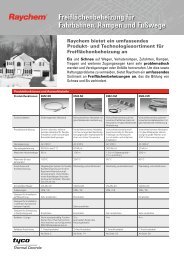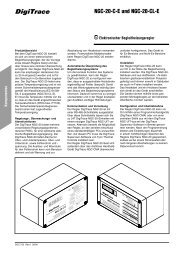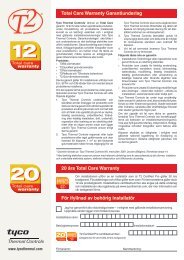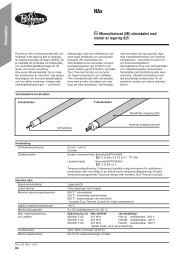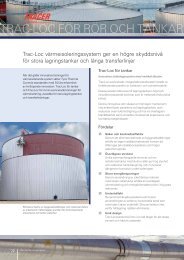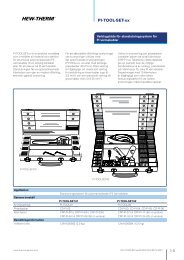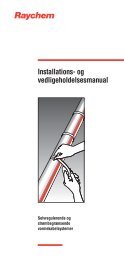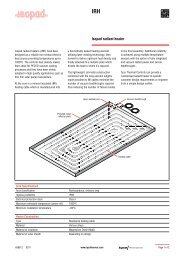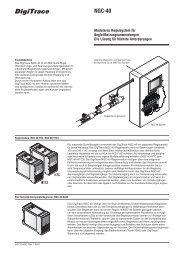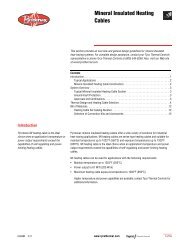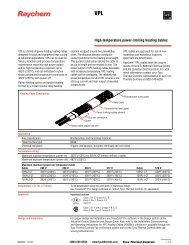Installation, Maintenance and Operation Manual - Tyco Thermal ...
Installation, Maintenance and Operation Manual - Tyco Thermal ...
Installation, Maintenance and Operation Manual - Tyco Thermal ...
Create successful ePaper yourself
Turn your PDF publications into a flip-book with our unique Google optimized e-Paper software.
Check materials received:<br />
D Inspect heating cable <strong>and</strong> components for in-transit damage.<br />
D Review the heating cable design <strong>and</strong> compare the list of<br />
designed materials to the catalog numbers of heating cables<br />
<strong>and</strong> electrical components received to confirm that proper<br />
materials have been received on site. The heating cable type<br />
<strong>and</strong> hazardous area marking is printed on the outer jacket.<br />
The application related hazardous area details <strong>and</strong> relevant<br />
design data for each individual heating circuit are recorded<br />
on a hazardous area label. (see 7.3)<br />
D Measure <strong>and</strong> note down the electrical resistance <strong>and</strong> the<br />
insulation resistance of the cable. Compare these values to<br />
those in the design documents (see section 8).<br />
Check equipment to be traced:<br />
D Check identification, dimensions of pipework /vessel, actual<br />
temperatures <strong>and</strong> insulation properties against the design<br />
documents.<br />
D Ensure all pressure testing of pipework/vessel is complete<br />
<strong>and</strong> final paint <strong>and</strong> pipe/vessel coatings are dry to touch.<br />
D Walk the system <strong>and</strong> plan the routing of the heating cable<br />
on the pipe, including tracing of heatsinks. e.g. valves,<br />
flanges, supports, drains etc.<br />
D Inspect piping for burrs, rough surfaces, sharp edges etc.<br />
which could damage the heating cable. Smooth off or cover<br />
with layers of glass cloth tape, aluminium foil or rubber<br />
profiles (e.g. G-02).<br />
3.2 Heating cable pulling <strong>and</strong> laying<br />
Heating cable pulling tips:<br />
D Use a reel holder that pays out smoothly with little tension.<br />
Figure 3: Importance of cable pulling direction<br />
3<br />
7<br />
D Avoid distortion of the cable <strong>and</strong> kinking.<br />
D When pulling the heating cable, avoid:<br />
d sharp edges<br />
8



